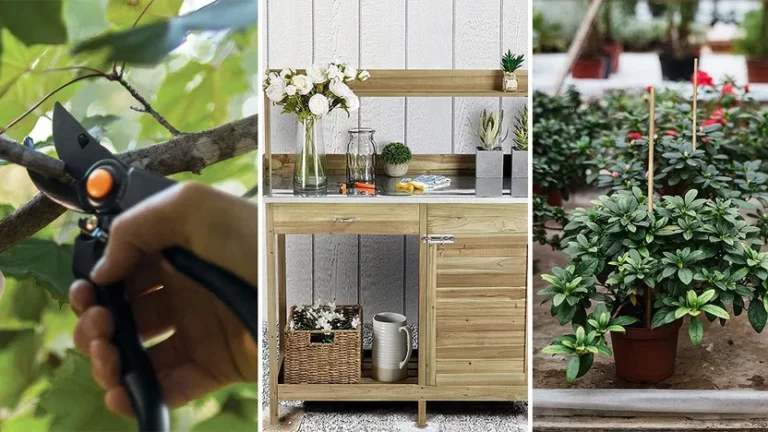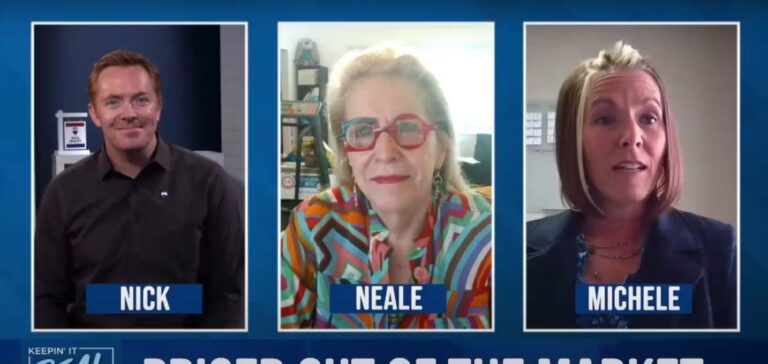
There are a few basics we need to make our garden grow—namely sun, water, and dirt. But to grow strong and verdant plants, you need the right soil.
So much of our garden’s health starts at the soil level, from the plants we can grow to the way they bloom and bear fruit. And yet, if you ask the average gardener what kind of soil is present or if a particular fertilizer is being used, you’re often met with blank stares.
And no wonder.
Soil isn’t something most plant parents understand or pay attention to. And while you can’t control many of the conditions in your garden (think weather to aphids), soil health is one of the few things you can manage—especially when it comes to improving it.
Why learn about soil science?
Beyond improving your garden, one of the best reasons to learn the ABCs of soil science is that it will save you time and resources.
“Understanding soil is essential—it’s the basis for good plant health and sustainability,” says horticulturist Stuart Mackenzie, of Trees.com. “Basic soil science and mechanics will make or break your efforts, and will either save or cost you money.”
Knowing your soil will also prevent you from falling into common garden pitfalls. A prime example? Buying harmful chemical fertilizers that promise to “fix” your garden.
“Too many gardeners keep adding fertilizer every time things don’t look like a magazine photograph,” says master gardener and writer Kate Russell, of The Daily Garden. “At first, it may seem to solve the problem. In the long run, however, this practice sets the stage for nutrient toxicities that can be difficult to correct.”
Understand the soil basics
Although you could quickly amass a degree’s worth of knowledge on soil science, a basic understanding will go a long way for many gardeners. You should know what kind of soil you have in your garden, for starters.
“The three soil types are sand, clay, and silt,” says Andrea Ballanti of Your Indoor Herbs. “They mainly differ in their particle size, which heavily affects how they behave in terms of drainage, aeration, and nutrient retention. This is very important as it guides which plants you can grow.”
A larger particle size offers higher drainage and aeration capacity. But bigger soil doesn’t retain nutrition as well as smaller soil. (Sand particles are the biggest, and clay particles the smallest.)
So while some plants like rich, moist soil, others can’t tolerate it. Take lavender, for example. The scented herb prefers clay soil that drains well.
Know your pH level
Beyond soil type and particle size, you’ll also want to be aware of the pH level of your soil.
“Soil pH measures how acidic or alkaline the soil is,” says Russell. “Plants absorb the most nutrients when soil pH is between 5.2 and 7.8, but a level of 6.0 to 7.0 is ideal. In these ranges, helpful bacteria and microbes are also the most active.”
Unfortunately, while you can easily change the soil type in your garden, fixing the pH will be a lot harder.
“It’s better to identify plants that perform well in the present soil pH, rather than trying to fight what part of the bedrock your landscape rests on,” says Russell.
Lavender, for instance, prefers slightly alkaline soil with a pH between 6.7 and 7.3.
Get a soil test
One of the best ways to get a complete picture of what’s happening in your garden is to order a soil test. And you won’t need a lab coat for this science experiment, just a bit of dirt from your garden and a reputable testing lab. (Google can help with that.)
“While you can buy those colorful plastic soil test kits at garden centers, they’re not accurate or complete enough to be worth the money,” says Russell. “For the price of a large bag of fertilizer, you can get a lab-based soil test from a local university or soil testing lab. These labs provide clear instructions for collecting and mailing samples in.”
So what does the test reveal that makes it worth the price of a bag of fertilizer?
“Soil tests tell you exactly which nutrients are present at what levels,” she says. “Soil tests also report soil organic matter levels, which provides a better view of your soil health.”
Improve your soil
Sometimes your soil test might show a specific nutrient deficiency. Other times, all you’ll need is to add a bit of organic material like compost or manure.
Whatever the specific needs of your soil are, one of the best ways to master your soil is by getting curious. Dig through your soil, and observe the color and texture. Make a note of the plants that thrive in your garden and those that just don’t take (no matter where you move them).
“And get out there and play in the soil,” says Russell. “There’s one soil microorganism (Mycobacterium vaccae) that improves mood.”
Once you have a handle on your soil’s DNA, so to speak, you’ll know what plants will flourish in your garden and which ones you can stop wasting money on.
Article originally appeared on Realtor.com.







